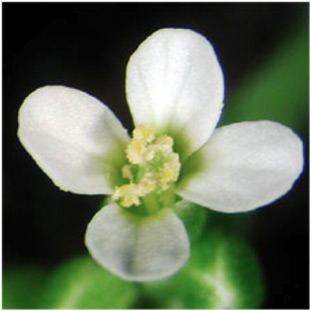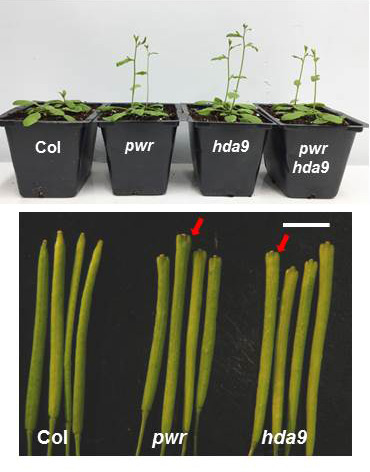주메뉴
- About IBS 연구원소개
-
Research Centers
연구단소개
- Research Outcomes
- Mathematics
- Physics
- Center for Underground Physics
- Center for Theoretical Physics of the Universe(Particle Theory and Cosmology Group)
- Center for Theoretical Physics of the Universe(Cosmology, Gravity and Astroparticle Physics Group)
- Center for Exotic Nuclear Studies
- Dark Matter Axion Group
- Center for Artificial Low Dimensional Electronic Systems
- Center for Theoretical Physics of Complex Systems
- Center for Quantum Nanoscience
- Center for Van der Waals Quantum Solids
- Center for Relativistic Laser Science
- Chemistry
- Life Sciences
- Earth Science
- Interdisciplinary
- Center for Neuroscience Imaging Research(Neuro Technology Group)
- Center for Neuroscience Imaging Research(Cognitive and Computational Neuroscience Group)
- Center for Algorithmic and Robotized Synthesis
- Center for Genome Engineering
- Center for Nanomedicine
- Center for Biomolecular and Cellular Structure
- Center for 2D Quantum Heterostructures
- Center for Quantum Conversion Research
- Institutes
- Korea Virus Research Institute
- News Center 뉴스 센터
- Career 인재초빙
- Living in Korea IBS School-UST
- IBS School 윤리경영


주메뉴
- About IBS
-
Research Centers
- Research Outcomes
- Mathematics
- Physics
- Center for Underground Physics
- Center for Theoretical Physics of the Universe(Particle Theory and Cosmology Group)
- Center for Theoretical Physics of the Universe(Cosmology, Gravity and Astroparticle Physics Group)
- Center for Exotic Nuclear Studies
- Dark Matter Axion Group
- Center for Artificial Low Dimensional Electronic Systems
- Center for Theoretical Physics of Complex Systems
- Center for Quantum Nanoscience
- Center for Van der Waals Quantum Solids
- Center for Relativistic Laser Science
- Chemistry
- Life Sciences
- Earth Science
- Interdisciplinary
- Center for Neuroscience Imaging Research(Neuro Technology Group)
- Center for Neuroscience Imaging Research(Cognitive and Computational Neuroscience Group)
- Center for Algorithmic and Robotized Synthesis
- Center for Genome Engineering
- Center for Nanomedicine
- Center for Biomolecular and Cellular Structure
- Center for 2D Quantum Heterostructures
- Center for Quantum Conversion Research
- Institutes
- Korea Virus Research Institute
- News Center
- Career
- Living in Korea
- IBS School
News Center
To Bloom or Not To Bloom: That Is The Question- IBS plant scientists discover a new epigenetic mechanism that contributes to plants' decision to flower - When spring is approaching, how do plants decide that it is time to flower? A team of plant scientists led by KWAK June M. at the Center for Plant Aging Research, within the Institute for Basic Science (IBS) unravelled a new mechanism to explain this seemingly easy, but actually complicated question. Their research was published in the Proceedings of the National Academy of Sciences (PNAS) on November 11, 2016. While some animals hibernate, seek refuge or fly to warmer climates during the coldest months of the year, plants are unable to move freely, therefore try to overcome environmental stresses by timing their physiological processes. And for this, epigenetics comes to hand. "Plants that bloom too early risk unsuccessful reproduction. Therefore plants have developed an epigenetic mechanism that regulates their flowering timing," explains KIM Yun Ju, first and corresponding author of this study. In order to study flowering, IBS scientists used Arabidopsis thaliana, a small plant related to mustard. Arabidopsis has small white flowers originating from floral stem cells. The stem cells are maintained at an initial stage of development, then differentiate into four sepals, four petals, six stamens and two fused carpels.
Epigenetic regulation is one of the major mechanisms to control flowering time. It regulates gene expression through chemical modifications of DNA and its interacting proteins, but without changing the DNA sequence. If you think of the DNA contained in each cell as a big book that contains all the information, these chemical modifications can be thought as bookmarks that tell the cell which pages to read and which to skip over time. A particular type of chemical modification called acetylation, occurring on DNA bounded proteins (histones), can be promoted or removed by specific proteins. Arabidopsis has at least 18 proteins that remove these chemical modifications and are referred to as histone deacetylases (HDACs). Which are the targets of HDACs, how they coordinate with each other and how they interact with other proteins is still unclear. This study discovered the proteins that interact to one of these chemical modifications that controls the time of flowering.
IBS researchers concentrated on the ninth HDAC, known as HDA9. This protein is known to regulate several biological processes, such as flowering time, seed dormancy and stress responses. The team found that plants lacking this protein bloomed earlier and have enlarged fruits, indicating that the regulation of the stem cells activity was compromised. The same happens when POWERDRESS (PWR) (a protein already studied by the same research team for its regulation of floral stem cells), or both HDA9 and PWR are missing.
The scientists discovered that PWR and HDA9 form a protein complex that removes the chemical modifications from a protein bound to DNA called histone 3. In the same way as removing a bookmark from the "DNA book" indicates that you do not need to read the pages next to the bookmark, removing this chemical modification reduces the production of AGL19, a protein that causes early flowering. In this way, plants maintain normal flowering time. "PWR, HDA9 and AGL19 regulate flowering time. A plant with reduced PWR and HDA9 has increased AGL19 levels and flowers earlier," explains Kim. "The opposite situation, that is the overexpression of PWR and HDA9, has not been tested yet." The next challenge for the team is to study other chemical modifications (or "bookmarks") on plants' histones and clarify how these different chemical modifications together regulate flowering. Letizia Diamante Notes for editors - References - Media Contact - About the Institute for Basic Science (IBS) |
|||
Center for Plant Aging ResearchPublication Repository |
|||
|
|
| Next | |
|---|---|
| before |
- Content Manager
- Public Relations Team : Yim Ji Yeob 042-878-8173
- Last Update 2023-11-28 14:20















